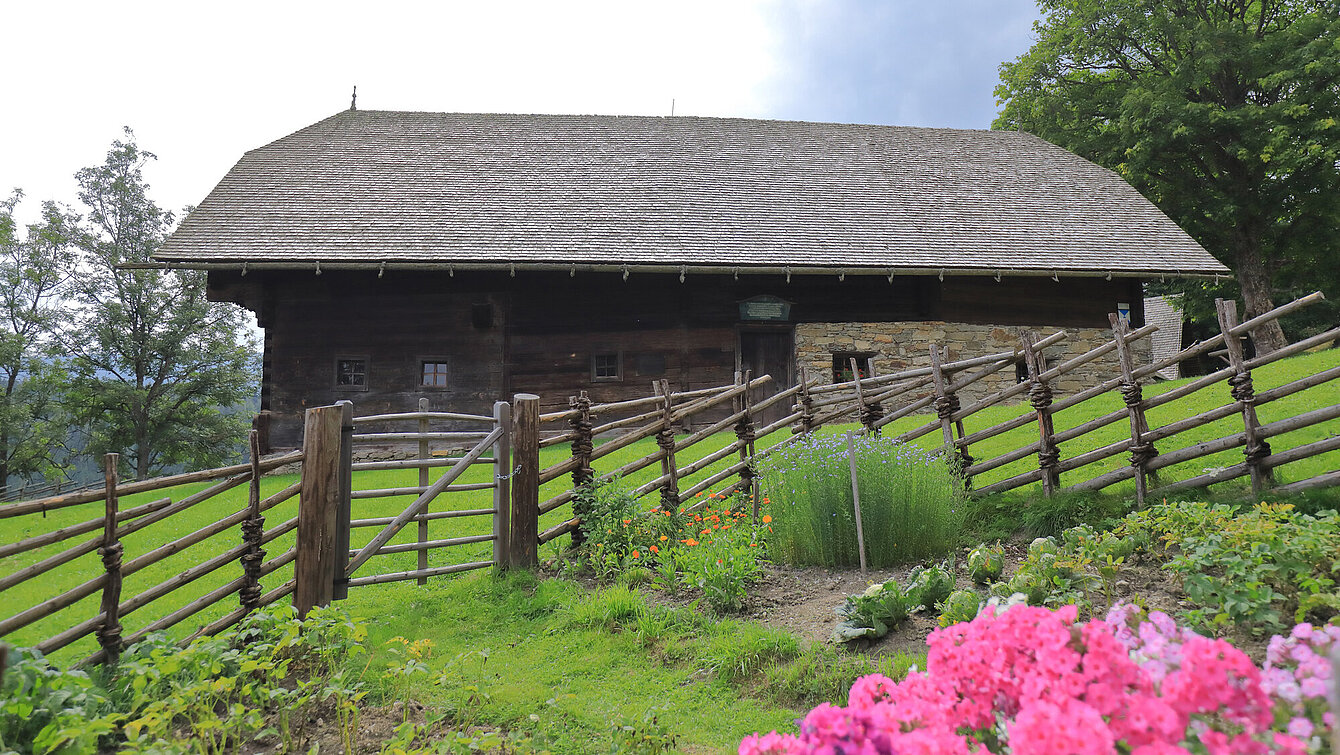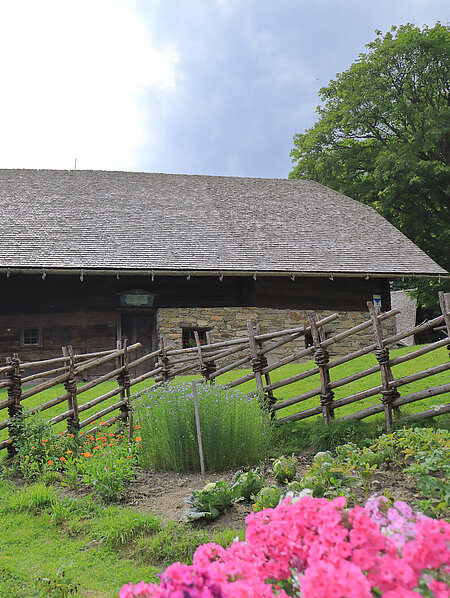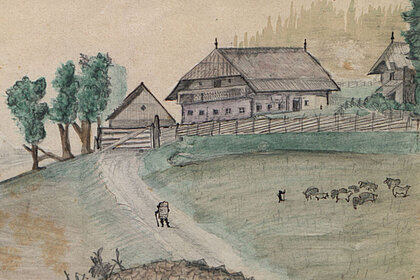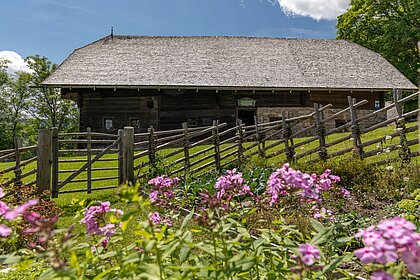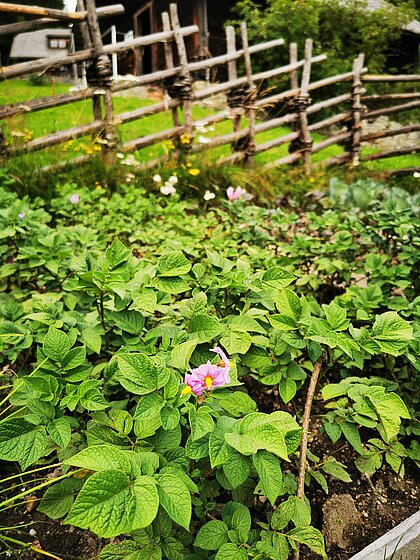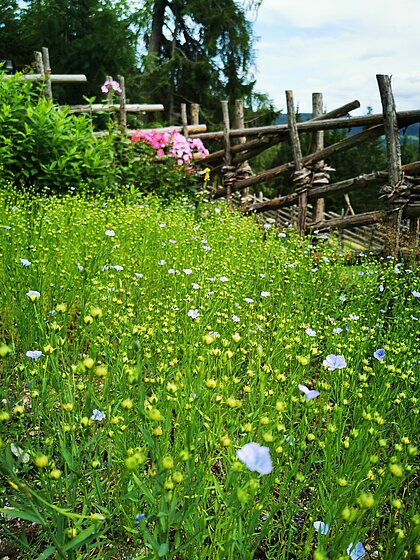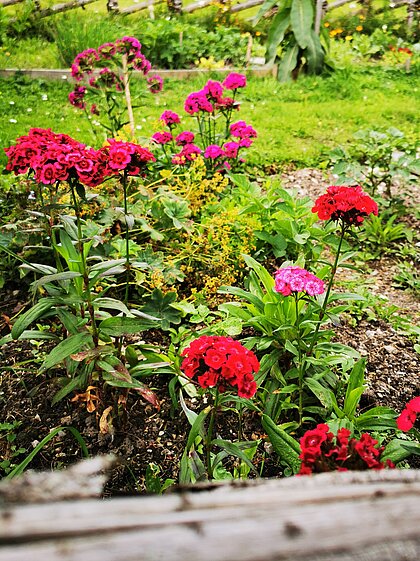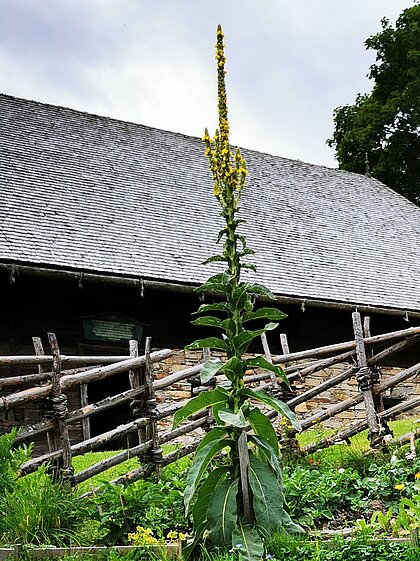The garden at Kluppeneggerhof was a farmer's garden in which the plants for the cabbage field were grown. While the farm garden was always close to the house, the cabbage field was usually a little further away. The gardening itself was purely the work of women and children.
Peter Rosegger described it in his story Die Schüssel Kraut (The Bowl of Cabbage): "In spring, the farmer's wife brings home a small bag of cabbage seeds from the grocer. She sows it on a well-fertilized garden bed, protected from wind and frost, and rakes it into the black earth with a wooden rake, covering it with dry ferns so that the chickens, birds and other animals cannot harm it. After a short time, the sprout emerges with its two delicate round leaves, thousands of them, so that the bed soon turns green and a dense forest of small long-stemmed and narrow-leaved plants appears."
The cabbage plants were then transplanted to the field. Vegetables themselves were only grown in small quantities in the garden, as were medicinal plants, spices and flowers.



















